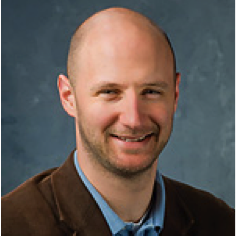If the binding cause around which new, covenanted church communities will gather is the missio Dei, and the intent of their gathering together is to be a community participating in the mission of God together, the ultimate outcome will be a maturing and multiplying of gospel-centered communities that are both incarnational and eschatological.
As many missiologists and theologians have stated, the understanding that the church participates in the mission of God as a sent community necessitates that the church take up residence in its community and seek to implement the gospel into the context in which it is located.
Incarnational Community
The missional church is an incarnational community seeking to birth an appropriate expression of a gospel community for a specific context. It is critical to specify that the church is expressing a gospel community to a particular context and not simply a gospel message. The gospel message is included in this community, but so are spiritual rhythms, practices, leadership roles, organizational structures, and styles and means of communication.
The church is expressing a gospel community to a particular context and not simply a gospel message.
Tweet this.
As theologian Karl Rahner famously observed, “The local Christian community is the visible sign of salvation that God has established in this seemingly godless world.” It is the community rhythms, practices, leadership roles, and such that make this community “visible.”
Through Christ
The church draws strong precedence for this form of ministry engagement through none other than the life and ministry of Jesus himself. Through the divine incarnation, Jesus came as the embodiment of God upon the earth, announcing and demonstrating the kingdom of God to a particular people at a particular time (though the kingdom of Jesus and his message are obviously supra-cultural as well).
Renowned missiologists Michael Frost and Alan Hirsch have pressed this truth further to clarify the extent of the incarnation when stating, “Within the pages of the New Testament we discover that God is actually Christlike, as opposed to our normal assumption that Jesus is Godlike.” In light of the incarnation, all who seek the true God discover who He is and what He is like through the person of Jesus. Therefore, it is Christology which provides one of the more specific guiding points within the mission of God for the shaping of the church.
All who seek the true God discover who He is and what He is like through the person of Jesus.
Tweet this.
As the church looks backward to the Christ-event, says theologian NT Wright, it receives a pattern for missional engagement in its present cultural context. Or as Frost and Hirsch put it,
The person of Jesus stands at the epicenter of what we do. He must shape everything. And the church must allow its connection with Jesus and the responsibility that this brings to determine how it will be and do church.
Ends and Means
Not only does the missio Dei give grounding for embedding a church community into its context and taking on a gospel shape within that context, it also provides an ultimate orientation for the community that is fundamentally directed towards the fulfillment of the missio Dei in the eschaton. A church’s understanding of the ultimate aim of God throughout history will provide another trajectory for its specific mission and related practices (see Craig Van Gilder’s The Essence of the Church).
As the church and its leaders look towards the future arrival of God’s kingdom, they can begin to live in the present in light of how God intends the world to be in the future (see StormFront: The Good News of God by James Brownson, et al.). Thus, the future, final reign of God shapes the regular pattern of church life at present.
The final reign of God shapes the regular pattern of church life at present.
Tweet this.
For example, a local church community that believes that God’s future kingdom will integrate people of various backgrounds and races into one family under the Messiah will be emboldened to work towards this end and other ends of justice in the present. Or a trans-local church network that envisions an eschatological future in which all persons’ physical needs are met would strive to place this as a priority in their missional collaboration.
A union of incarnational living and the ultimate aim of God informs the ultimate outcome of new church networks, and fresh expressions of church can always find their way by both looking back to Christ and forward to his ends.


